Over the next few months we’ll be sharing concepts of each major Apple platform. Last month, we shared our concept for watchOS 8, and today we’re sharing the next one, in this case for macOS. It includes all new apps, improved privacy controls, clearer notifications, and more. But before I dove into designing this macOS concept, I wanted to figure out what Apple might call this year’s release.
It’s very clear that after each truly big release of macOS, Apple chooses to zero in on a few specific areas for improvement. That’s usually reflected in the release’s branding. For example, over the past couple of years we’ve seen releases like “Yosemite,” then “El Capitan” or “Sierra” to “High Sierra.” This had me thinking about what places within or around Big Sur might resonate well with this kind of macOS branding.
What should it be called?
At first I considered names like “Santa Lucia,” which is a mountain range near Big Sur. Big Sur’s wallpapers show lots of mountains and hills, so it seemed like a natural fit. But I decided to go back and look at previously reported Apple trademarks for macOS names. One of them stands out in particular. “Monterey” is a name already trademarked by Apple and it happens to be the county that Big Sur exists within. It’s worth noting that “Big Sur” was one of the trademarks discovered at the same time as “Monterey” back in 2014.

Several other names included in that trademark filing have been used over the years so a name like “Monterey” is a pretty good bet. Some of those names that were used are: “Yosemite,” “Sierra,” and “El Cap.” Other names like “Redwood,” “Pacific,” “Diablo,” “Farallon,” and “Grizzly” were included in the filing along with several other potential future names.
The sheer size of Big Sur’s system overhaul and Apple Silicon compatibility indicate that this year’s release will be a smaller one, which likely focuses more on individual apps and small system improvements rather than structural changes. A name like “Monterey” indicates that.
Manage cards and passes
I am sure that there are some people who will wonder why this app is even part of this concept, but long term, it makes a ton of sense to have the Wallet app on macOS. Apple Card users currently need to view status information inside of System Preferences or use the Apple Card website.
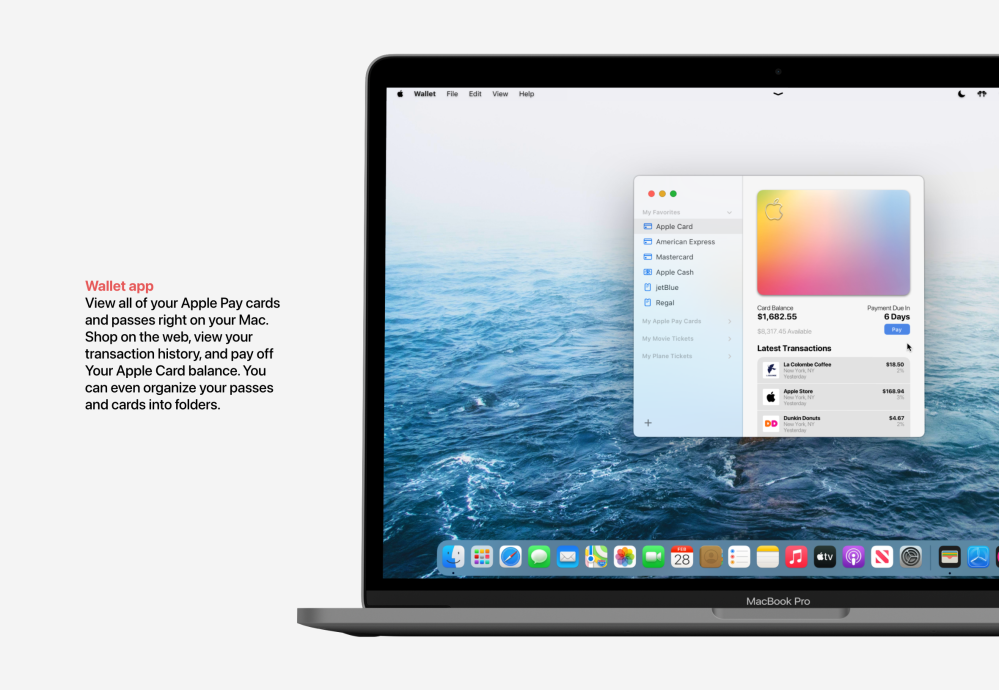
With a full-fledged Wallet app on macOS, you could easily keep an eye on your transactions and pay off your balance. You could also organize your cards and passes into different categories. Additionally, over time we tend to accumulate lots of passes that end up being used only once. Those passes could be archived on your Mac so that you don’t need to bother with them on your iPhone.
Time to kill Photo Booth
Photo Booth has been a part of macOS for over a decade and it has barely changed at all. Over its 16-year lifespan, the app has come to sit inside of peoples’ applications folder collecting dust. Memoji and Animoji are the future of fun on Apple platforms. They’re this generation’s version of photo booth effects.

An app like “Memoji Studio” could introduce a standalone version of the Memoji iMessage app on iOS. You’re probably wondering how it would work on the Mac, though, without a true depth camera. Memoji Studio would require a new generation of Mac with a true depth camera, but older Macs could still use stickers, the Memoji builder, and the old school Photo Booth effects.
Fitness+ classes on the Mac
Apple currently lets Fitness+ subscribers take their classes on an iPad or Apple TV if they want to use a larger display than the one on their iPhone. It would be a natural extension for Apple to take the Fitness+ app on iPadOS and bring it to the Mac.
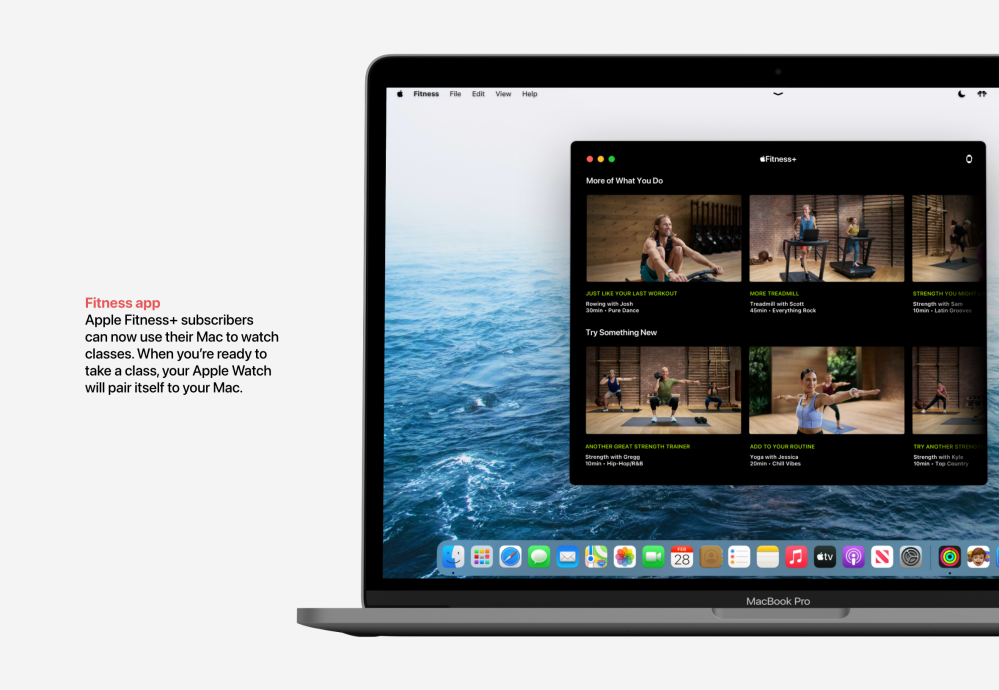
Your Apple Watch could connect to your Mac in the same way that it currently connects to your iPad or Apple TV. Just like your other devices, you could also use your wireless headphones to watch the classes. Notebooks could also download different classes in the event that you will be using your Mac somewhere that has no internet access or weaker connections.
OTA genius appointments
Because of the pandemic, it has been difficult for users to get their devices repaired without risking their health. Apple stores take even more precautions than most other retailers, but there are lots of problems that users have that shouldn’t require them to visit a store in-person.
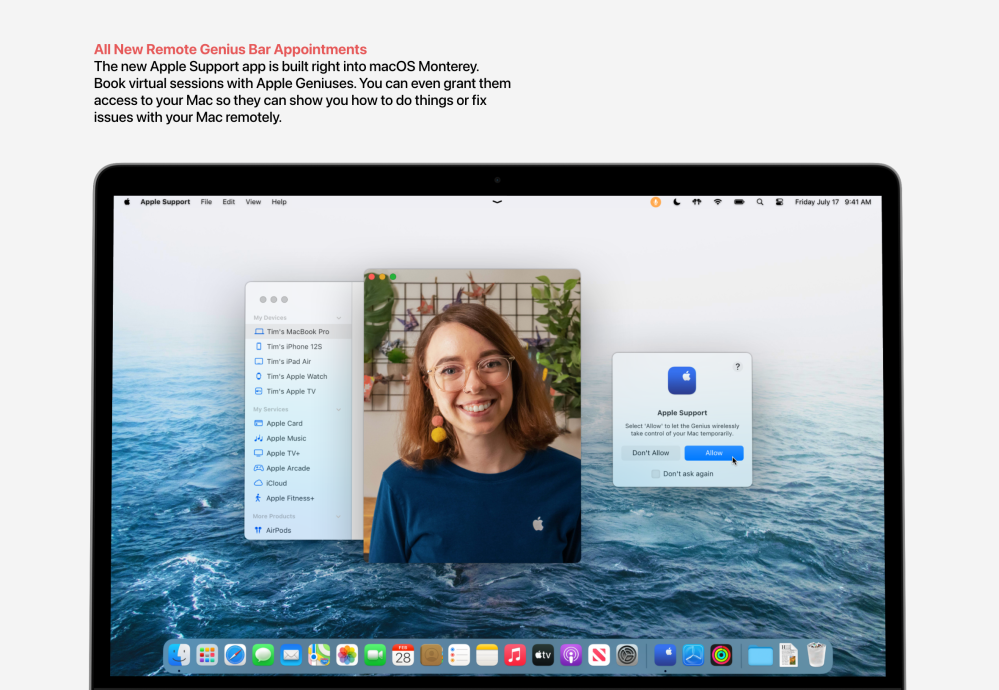
With the new Apple Support, app users could schedule an appointment with an Apple Genius using Facetime protocols. It’s similar to using iMessage business chat, which is how you can currently talk to an Apple Support specialist. With the new version for macOS, you could grant the Genius access to your Mac over-the-air so that they can show you how to do things or even troubleshoot your Mac remotely. They’d only have access for the duration of the call, and you’d see all of the things they are doing in real-time.
Better for developers and testers
For the first time, Mac developers can test their apps via TestFlight. Users of the app can sign up to test beta versions of their favorite apps, send feedback and more. It works just as you’d expect it to if you are an avid user on iOS or iPadOS.
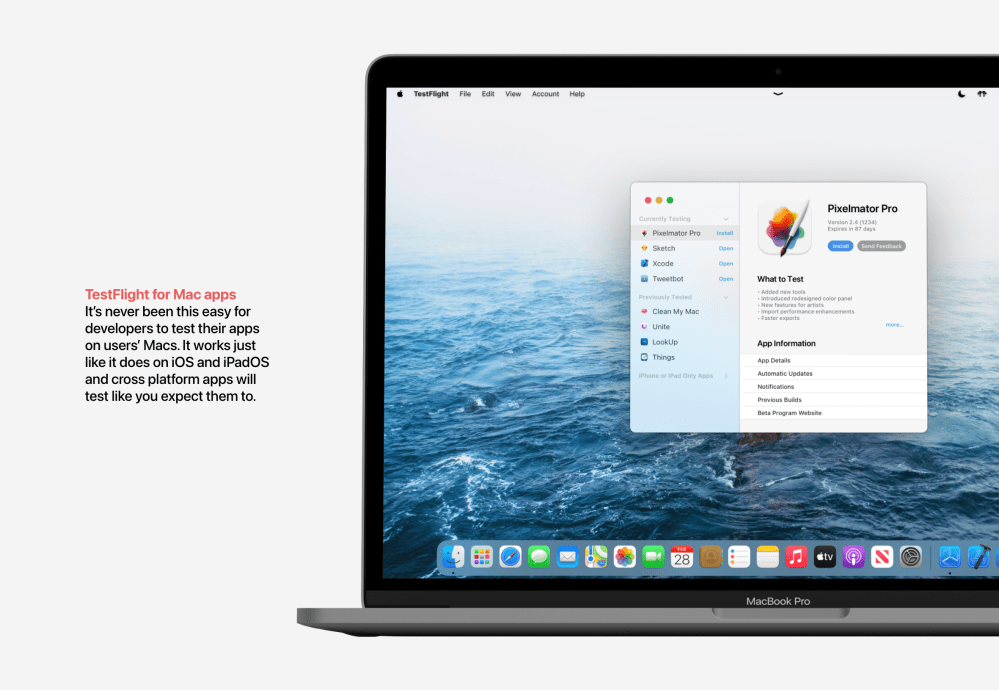
iOS and iPadOS apps that work on macOS machines with Apple Silicon also show up right in TestFlight on your Mac. They work just like they would on those other platforms.
Two-factor made simple
With Apple Authenticator you can connect your favorite web service accounts to the Keychain app on your Mac if you use Touch ID for authentication. When signing into a service that uses two factor authentication, your Mac will automatically generate a code with a touch of your fingerprint. No one but the service you are signing into sees your two factor code and because it requires your fingerprint to generate a code, no one but you will be able to sign into your accounts. If you need to generate a code for use on another device, just open Keychain Access and generate a code with your fingerprint.
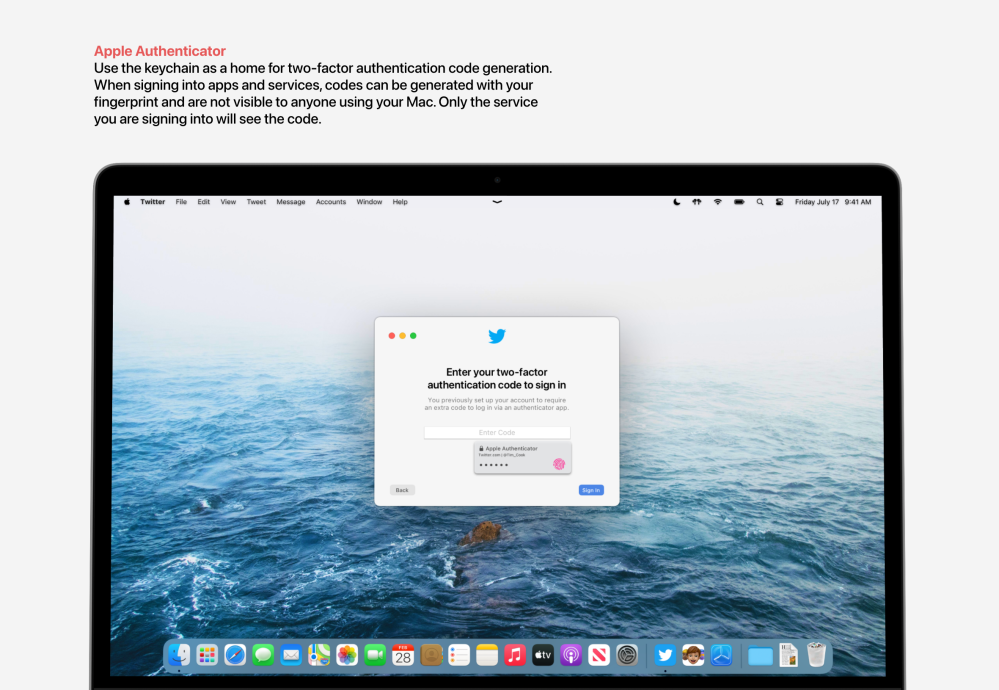
Apple Authenticator is more private than any other similar tool. It prevents others using your devices from viewing and entering your two factor authentication codes. It is far more secure than apps like Google Authenticator or Authy. And because it works just like traditional keychain entry, you already know how to use it.
Automator for the rest of us
Shortcuts has been hugely popular on iOS and iPadOS, so it would only be natural for the app to come to macOS sometime soon. Automator is incredibly old, even if it is powerful. The new Shortcuts Mac app would sync with all of your other devices and because of catalyst, many of them would work out of the box on macOS.

Users of Automator could still take advantage of that app’s functionality through the automation menu in the sidebar. A new folder would let you see all of your most frequently used shortcuts. There could also be a new web sources menu that makes it easier to install third-party shortcuts.
Take lots of temperatures
One of the holdout iOS apps that hasn’t made its way to the Mac is Weather. We’ve seen the new weather widgets come to macOS in Big Sur’s Notification Center, but a standalone app could be a huge boon for users. Currently you need to use a website or download a third-party weather app to see lots of data.
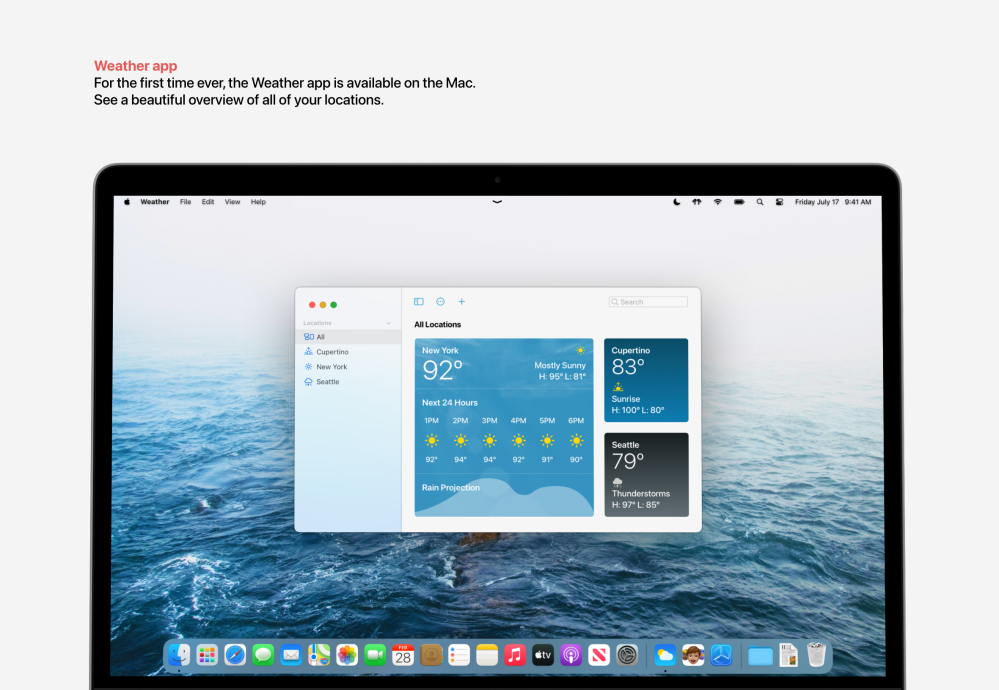
The best part of this particularly version of the Weather app would be the larger canvas. With it, Apple could display tons of locations at a glance using a similar design to that of the new widgets.
Unmissable, more actionable notifications
Big Sur really messed up the Mac’s notification system. Action buttons aren’t easily visible and often require extra clicks. With Monterey you could see all of the buttons at a glance and these notifications could drop down in the center of the display. You might wonder why that makes sense, no? Well, Apple removed the notification icon from the top right corner. It makes no sense to click on the clock to see your notifications.
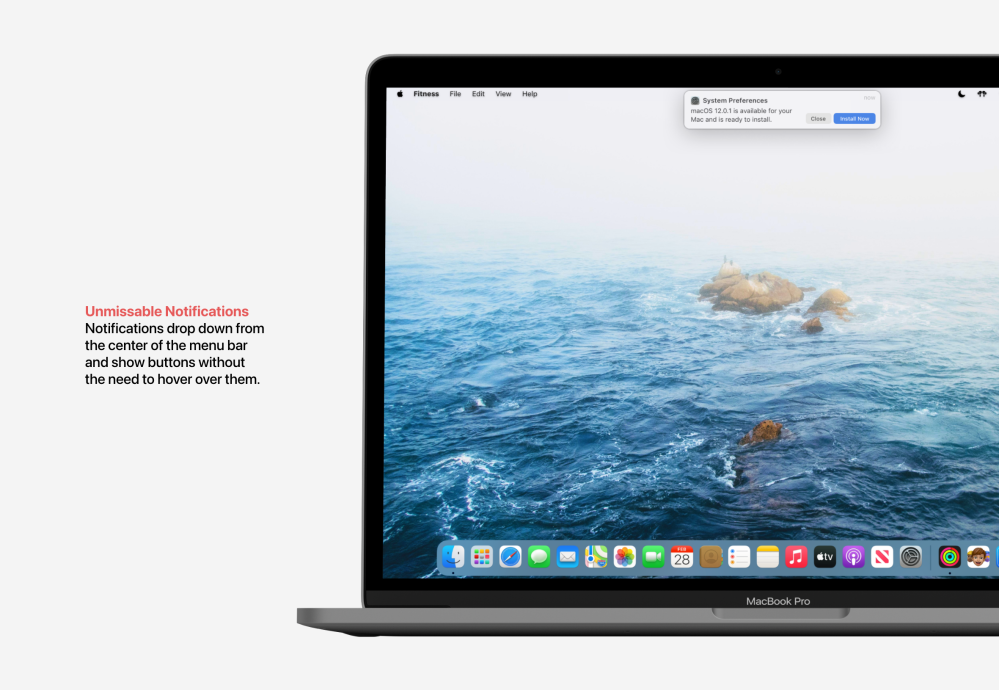
With Monterey you could have a new notifications icon in the center of the menu bar. Notification Center could appear in the center of the display so that users don’t miss any important alerts. Not only would this make it harder to miss notifications, but it would be on par with iOS and iPadOS. Their notifications appear from the top down. Apple could dedicate the side menu that appears by clicking the clock to widgets.

More to love
This year Apple could also make some refinements to systems that they introduced in Big Sur. iOS and iPadOS gained some great new privacy indicators that let you know when your microphone or camera are on right in the status bar. Since the Mac has a green light that turns on when your camera is on, a camera indicator isn’t necessary. A microphone indicator, however, is quite important. An orange dot appears right in the menu bar like it does on iOS. Plus user interface elements are cleaner and more flexible.
What do you think about our macOS Monterey concept? Do you have any other ideas for names that Apple may choose? Are there any features missing that you think Apple might add this year? Let us know in the comments below!
FTC: We use income earning auto affiliate links. More.
Check out 9to5Mac on YouTube for more Apple news:
Technology - Latest - Google News
February 03, 2021
https://ift.tt/3jau4XO
Concept: macOS ‘Monterey’ could introduce new apps, better notifications, and smarter privacy controls - 9to5Mac
Technology - Latest - Google News
https://ift.tt/2AaD5dD
Bagikan Berita Ini
















0 Response to "Concept: macOS ‘Monterey’ could introduce new apps, better notifications, and smarter privacy controls - 9to5Mac"
Post a Comment